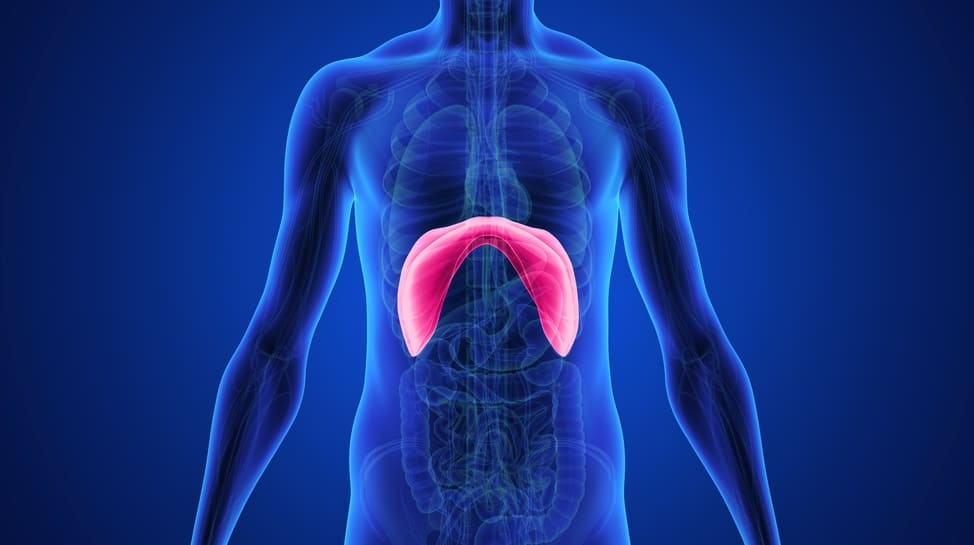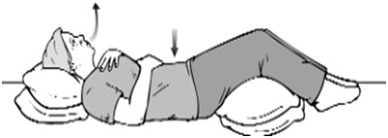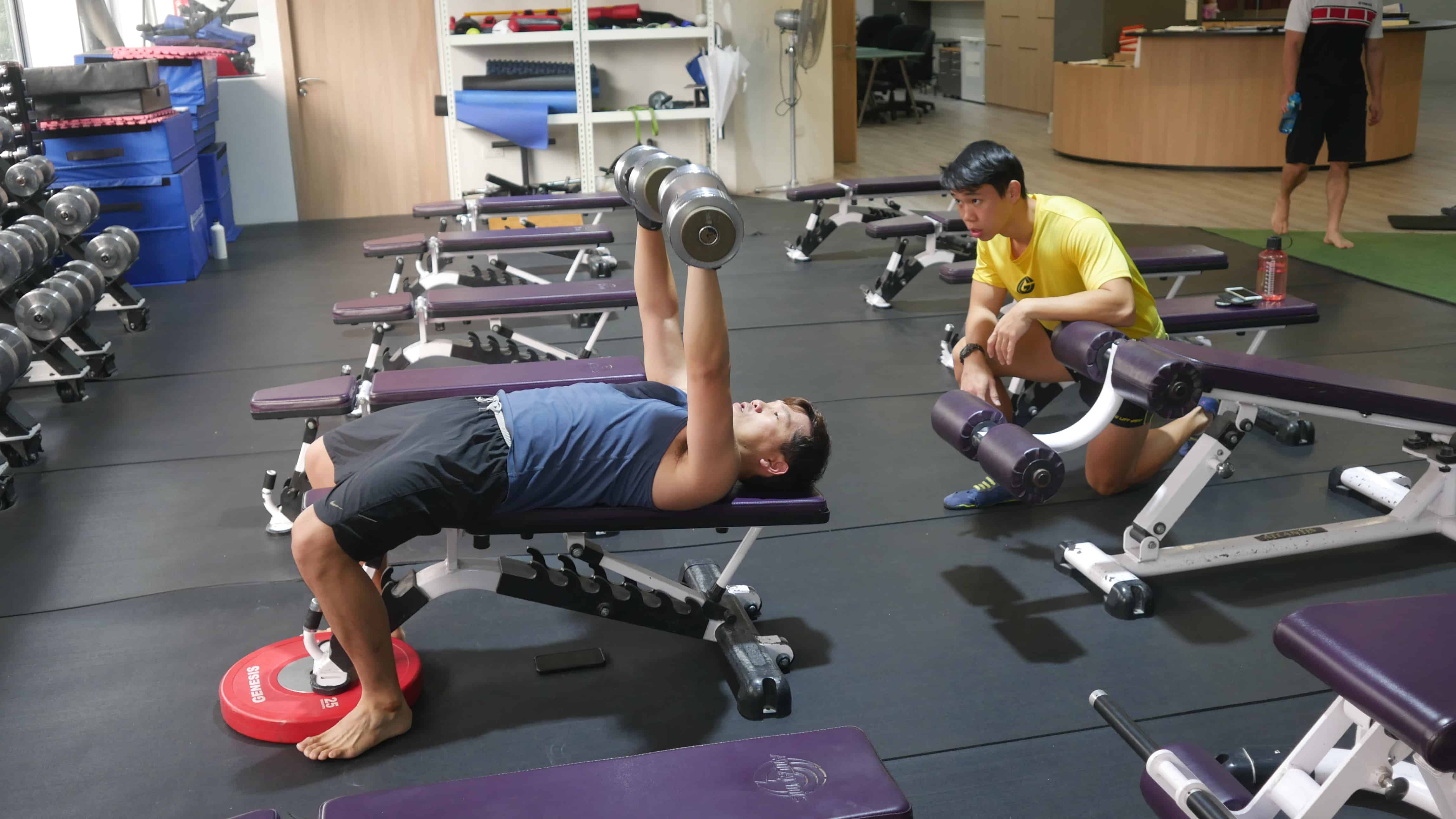By Coach JJ Wong, Assistant Centre Manager, Eunos HQ
Introduction
Breathing is an often overlooked aspect of our lives. However, we take anywhere between 17,000 to 30,000 breaths a day. The way we breathe can have a significant impact on our overall health and well-being.
How Breathing Affects Our Daily Lives
As mentioned in the previous article “Don’t Send the Wrong Messages! Rest and Recovery from a Hormonal Perspective” by my colleague, Coach Jen, our bodies are designed to operate in 2 states: the sympathetic state (“fight or flight” mode) and the parasympathetic state (“rest and digest” mode).
Being in a sympathetic state allows us to deal with the daily challenges in life, as well as get a good workout in the gym. The body breaks down in this process as it gets powered through the task. However, being in this state for a prolonged period of time is detrimental to overall health and well-being.
Unfortunately, most people in Singapore remain in the sympathetic state – the “fight or flight” mode, largely due to the stresses and demands in our daily lives.
When this happens, the most important breathing muscle gets suppressed, and all the muscles around your neck and your shoulder are being taxed in helping you to breathe.

(Source: backsmarthealth.com)
This can lead to neck and shoulder pain as well as tension headaches. It can also cause you to have elevated muscle tone, which means that your muscles are unable to relax and are contracting because your nervous system is overstimulated. This leads to a vicious cycle of shallow breathing and even more tension in the muscles.
Furthermore, when your breathing is fast and shallow, characteristic of a chest breather, it can lead to problems in your digestive system and your ability to eliminate waste.
Being a chest breather also has effects on the emotional and mental aspects, where it results in elevated adrenaline and cortisol levels that cause you to feel frantic and stressed out all the time.
In terms of performance, your body will sacrifice any system to keep your respiratory system going. There’s nothing more important for your survival than oxygen.
The respiratory system is the chief controller of the muscular system. If the recruitment of the “breathing” muscles is not in sync with the movement of the body, or vice versa, our performance will be weakened.

(Source: livestrong.com)
Try this: Take a ball and throw it as far as you can naturally, and see how far it goes. Then try again, but this time exhale before you set up for your throw, and inhale as you throw the ball, do you notice a decrease in strength this time when you throw that ball?
Breathing the wrong way will shut down the muscles that you are trying to take charge of, because your body is trying to protect itself from harm.
The Regenerative Effects of Proper Breathing
The key to good breathing is to take in breaths with our diaphragm, which is the muscle beneath your rib cage.

(Source: esicm.org)
In a parasympathetic state, your breathing is slower and deeper. This fills your belly up with air, which in turn, calms the body down.
When you breathe into your belly, there is now more supply of blood being put into the intestinal tract to aid in the digestion and elimination process.
When your body is primed for digestion and reparation, it will offset the exertions of the body when it was breaking down, by using the nutrients from the food that you eat to build your body back up.
It has also been shown that there is a link between the lack of diaphragmatic breathing and heart disease (Source: “Breathing for Optimal Health”). One study showed that heart attack patients who were taught to breathe through their diaphragm resulted in their chances of getting a second heart attack significantly dropping.
As the respiratory system is the chief controller of the muscular system, we can bring our body into a parasympathetic state through different breathing techniques, which will be discussed later in this article.
The Important Function of the Diaphragm
First, we need to understand how our breathing works by looking at the diaphragm, the most important breathing muscle in your body.
The diaphragm is a thin dome-shaped layer of muscle and tendon that sits behind the ribcage.
In order for the oxygen to enter our lungs, we have to create negative pressure (letting air in without it getting out) within our thoracic abdominal cavity. And the only way to create a negative pressure fully is to let the diaphragm drop down, to create this negative space. Anything that has a negative space wants to be filled by something.
When the diaphragm drops down, the oxygen rushes in, and when the diaphragm relaxes it pushes the carbon dioxide out. This constitutes the right type of breathing pattern we should have.
A simple rule of thumb would be that for any movement, you should be exhaling WHILE exerting force THROUGH the entire range of motion.
Methods to Correct the Breathing Dysfunction
Paul Chek, the internationally-renowned expert in corrective and high-performance exercise kinesiology once said, “If you have a breathing pattern disorder, and you’re not breathing through your belly in the two-thirds: one-third ratio, it means that you’re going to have to contribute to your own training and your own rehabilitation with enough repetitions of breathing and movement in harmony, in re-establishing normal functional motor patterns.” (Source: Chek, P. (Director). (n.d.). Breathing & Movement Integration [Video file]. Retrieved February 15, 2017)
Here are 4 breathing techniques that you can practice everyday that will help your overall health and performance.
For Restorative Purposes (Overall Health)
Technique #1: Alternate Nostril Technique (3 minutes/day)
(Source: Christianson, A., Dr. The Digestion Sessions - The Stress Cycle: A Mind-Body Approach to Resetting Your Digestive Rhythm.)
With this technique, you are tying the breathing through your nostrils with the sympathetic and parasympathetic states.
The right nostril and its nerves are related to the parasympathetic nervous system, whereas the left nostril and its nerves are related to the sympathetic nervous system.
The idea is that you are closing one nostril and then the other, and breathing along to a beat or a timer.
Step 1: Place a timer in front of you
Step 2: Sit down in a comfortable position.
Step 3: Using your index finger, start by blocking the right nostril and breathing in through the left.
Step 4: Hold your breath
Step 5: Block your left nostril and breathe out through the right.
Step 6: Inhale with the right, hold the breath, exhale on the left.
Step 7: Keep alternating the nostril with every inhalation
With each step, count to 3 seconds before moving on to the next. Do this for 3 minutes. I recommend doing this 90 minutes after waking up. This will set you up for a better rhythm for the whole day, and it is also shown to be a powerful tool in regulating peristalsis as there is a link between your breathing and your gut. And you are definitely better off when you are having regular bowel movements!
Here’s a video I created to help you to follow the steps above.
Technique #2: Diaphragmatic Breathing
This is something you can do at any time, especially when you are not feeling too well, or things just seem out of place.
The best way to do this is by placing your hand on your tummy and covering your belly button (preferably lying down with your legs bent, or sitting down). Breathe into your belly and push your hand out as far as you can.

(Source: my.clevelandclinic.org)
As you exhale, think of pulling your belly button in to “touch” your spine, going as far in as possible. This movement has the effect of physically massaging your organs and pumping more blood into the intestinal lining.

(Source: my.clevelandclinic.org)
You can do 6-12 deep diaphragmatic breaths at a time, and this can have a strong effect on lowering the level of discomfort in your abdominal region.
For Performance Enhancement
Technique #3: Exhalation (During Exercise)
There is a common misconception to suck in the stomach and tighten up the abdominal area while performing exercises.
This weakens your performance, because you are not using your diaphragm. When you do not use your diaphragm to breathe, your nervous system does not send strong signals to the rest of your body, thus compromising the power and strength.
A simple yet effective method of breathing during exercise is to exhale when you are exerting force.
For example, when you are doing a dumbbell bench press exercise, you exhale when you press the dumbbells up. When you are doing a rowing movement, you exhale when you row and pull your elbows back in the direction of your body.

This exhalation will help improve your performance because you are no longer sucking in your stomach. Moreover, because you are exhaling forcefully, you will find that you need to inhale more air, to give you the energy to exhale once again. This in turn, brings you further away from holding your breath during your exercise.
Technique #4: Bracing (While Lifting Heavy Weights)
Bracing comes into place when the weight that you are lifting gets heavier and it is much more strenuous to lift the weight.
Let’s use the 2 compound lifts, the squat and the deadlift, to illustrate this. Under a heavy weight (when you have a heavy weight on your back during a squat), or lifting a heavy load (deadlift), requires a different kind of breathing. Bracing, also known as the Valsalva manoeuvre, requires you to fill your thoracic-abdominal cavity with air. This also means that you’re filling your belly with air.
Picture your belly filled with air like an inflated balloon. There is a great amount of air pressure in that balloon. Once you have filled that balloon with air, you want to compress down on that balloon without letting the air out of the balloon. This is done by tightening your chest as well as your abdominal area, maintaining the compression down at your belly and not in your face. If you hold the tension in your face, this can overwork the respiratory muscles in the chest, neck and shoulder area, and can cause dizziness.
When you have created the compression of the air, your spine is much more stable. With this greater amount of stability in your entire body, you’ll be able to exert a lot more power during your exercises.
When you are doing a heavy squat, you should do your bracing before you descend down, and still hold that brace as you come up. When you’re doing a deadlift, you should get down into the starting position, and then you should do your bracing before you lift the weight up. You also want to hold that brace as you come up.
If you were to simply exhale while exerting force with a heavy weight, your body will compensate by overstraining your muscles and joints because the breathing is not optimal. This can significantly increase the risk of injury to your body.
Exhaling during exertion is generally better for performance, as it will naturally lead to more oxygen being taken in and more breaths taken. However, as the weights you lift require more effort, the body must be able to create air pressure from within that will help to protect the body, and also allow you to hold onto the strength and power output for longer. This technique is explained to our Genesis Gym clients during their training sessions to help more than 10,000 of them to achieve their fitness goals.
Conclusion
It may not be possible to completely remove the low-grade stressors in our daily lives, but we can always change things that are within our control, such as the way we breathe. With constant practice of mindfulness and the breathing techniques above, we can help to change the disequilibrium between the parasympathetic and sympathetic states.
